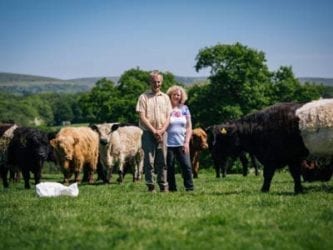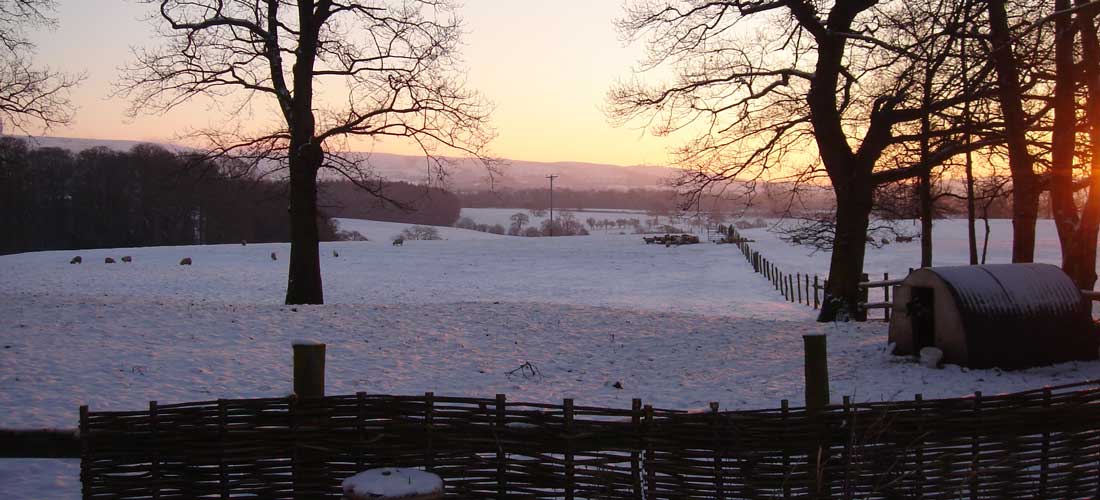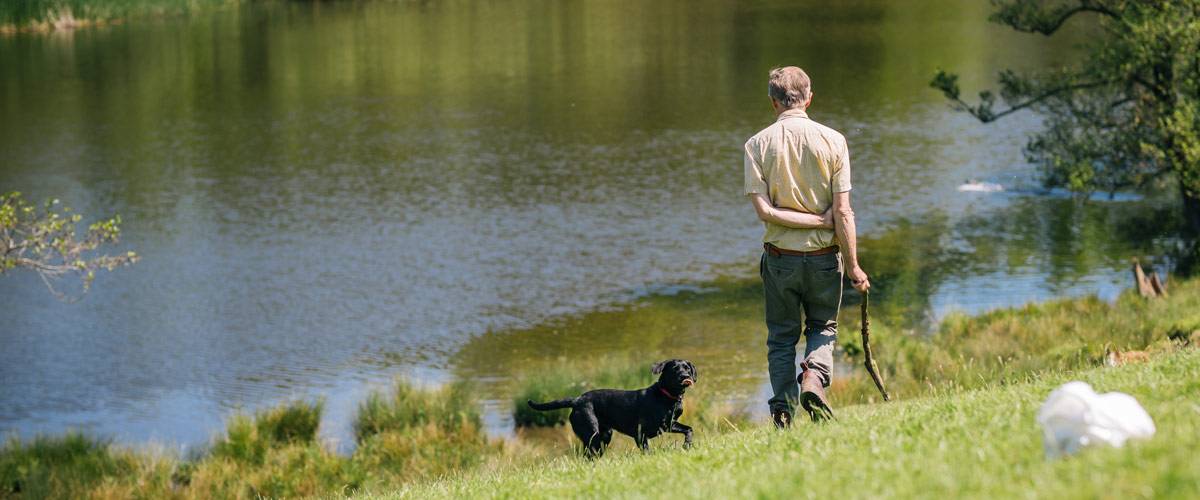Our Farm
 Malcolm and Sheila have farmed Yew Tree since 1987. They have two grown up children and two grandsons who are regular visitors to the farm.
Malcolm and Sheila have farmed Yew Tree since 1987. They have two grown up children and two grandsons who are regular visitors to the farm.The Seasons on Yew Tree Farm
Farming never stops! There is always something to do on the farm.
Each season has its own unique charm at Yew Tree Farm. The ducklings on the lake in Spring have an endless fascination for the young and young at heart alike! Lazy days of Summer and the smell of new-mown hay as the skylarks climb into the blue sky. Autumn days have a particular charm with glowing colours and gentle sunshine. A bracing walk in Winter has its own rewards.
Guests often ask us “What does the farmer do throughout the year?” This section will hopefully answer this question and also answer the questions that we are asked the most.
Spring

Nature Notes
Hedges begin to show buds for new leaves and hazel catkins appear. The Blue Tit, Great Tit and Chaffinch are in full song. Swallows appear and sweep in through the shippon windows which we especially leave open. As a result of the mild winters we have had recently we have an explosion in the rabbit population. Pheasants are often to be seen and heard around the farm.
Field Work
Spring sees lots of activity in the field which we have to prepare for the summer grass. If it is dry enough we can spread the muck which has accumulated in the sheds over the winter. The fields then need to be chain harrowed to break up the muck and then rolled to smooth out any bumps.
We also have plenty of outdoor maintenance work such as fencing and drainage. The annual weeds, thistles, nettles and docks need constant attention – mowing and spraying help to keep them under control. When the soil temperature is high enough, artificial fertilizer in the form of pellets, nitrogen, potash and phosphate is spread on the fields.
Animals
We don’t always lamb sheep but if we do, this is when they are born. If we are lucky we also have a kid (baby goat) or two at this time. Our hens start to lay more eggs as the days lengthen. Some will hatch their own chicks – the broody hens sitting on the eggs for 21 days before the chick hatches out by pecking through the shell. We also use an electric incubator which controls the temperature and humidity and turns the eggs twice daily.
If it is dry enough we will let out the cows which have stayed inside over the winter. Most of our cattle are bought in the Spring. Malcolm travels to Wales and Scotland in search of cattle between 15 months and two years of age.- he likes Limousins and Welsh Blacks. Eating just grass the cattle gain about 1kg per day whereas on grass and corn this increases to 2kg per day.
Summer

Nature Notes
May sees the Damhead Wood covered with a vivid carpet of bluebells. The foxgloves are in full bloom in June and Dog Roses appear in the hedgerows. Buzzard’s climb high in the sky and the grasshoppers are in full voice.
Field Work
Extra grass is grown in Summer and saved to feed the cows in winter. We try to make some hay and some silage. For silage the grass is cut, packed into big bales and sealed in plastic bags to keep the air out – this stops the grass going mouldy. For hay, the grass needs to be drier and ideally, 4 – 5 days of warm sunny weather are needed. Weed Control is an ongoing task as is fencing and muck-spreading.
Animals
The sheep are sheared and this helps keeps the flies away. The sale of lambs is far more important to us than the sale of wool as it costs nearly as much to have the sheep sheared as the wool is worth. Sheep are beset by many kinds of internal parasite. They are dosed with a drench to keep them healthy and their hooves need to be trimmed frequently or they become overgrown and infected. The majority of fat lambs are sold in August and September. We start to supplement the grass feed for the cattle with corn and other feed (for example waste bread or grains) at the end of July. The finished fat cattle are sold at 28 – 30 months old. Cattle parasites are treated with worming drenches.
Autumn

Nature Notes
The fruits and berries in the hedges are now ripe and the wood pigeons feed on the elderberries and acorns. By the third week of September, the swallows will have left on their annual journey to Africa. There is a golden glow as the leaves change colour and in November it is dark by 4.30 pm.
Animals
Autumn is the season of sheep sales and fat lambs and cattle continue to be sold each week. As the fields get wetter the cattle are brought inside and the outside cattle get extra food and silage.
Winter

Nature Notes
The first frosts and snow leave the hedges and trees bare. It is a good time to see things usually hidden from sight such as the remains of a bird’s nest. Wood pigeons are busy looking for food and the tawny owl may be heard in February looking for a mate.
Animals
Feeding the animals takes more time now and there is always indoor maintenance – the sheds need to be cleared out of muck and it is stacked ready to be spread in the Spring. A cow produces 3 – 4 tonnes of manure in a year!
